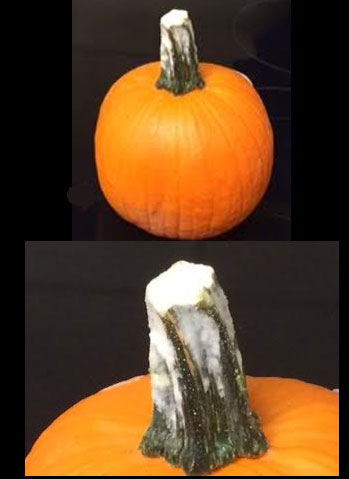A QC Inspector recently found mold affecting their pumpkin stems, when arriving into their DC. Upon checking the U.S. Grade Standards for Winter Squash and Pumpkins, and the USDA’s Inspection Instructions I was not able to find any reference to moldy pumpkin stems.

For pumpkins only, soft rot or soft mushy type decay affecting the shell of a pumpkin is scored against the decay tolerance of 2%, but if the soft rot or soft mushy type of decay is found affecting the stem then it is scored as a defect, but against the total defect tolerance of 10%. Soft rot is scored as a free from defect, whether it affects the shell or only the stem.
So, can mold be scored as a defect? Yes, but mold is not a free from defect. In order to be scored as a defect it must materially affect the appearance of the pumpkin. If you find the mold to be obvious enough, the pumpkin is scored as a defect, against the total defect tolerance of 10% (not the 2% tolerance for soft rot).
Looking at this pumpkin above, do you think the mold materially affects the appearance of the pumpkin? If you answered “Yes” then you are correct. There is enough mold affecting the stem for this pumpkin to be scored as a defect.

One Comment on “Pumpkins- Moldy Stems”
So, if there is mold on stems of butternut or acorn squash, then it is not scored against the grade? OR it is scored ONLY if ‘Excessive’ and detracts from the appearance? Thank you.